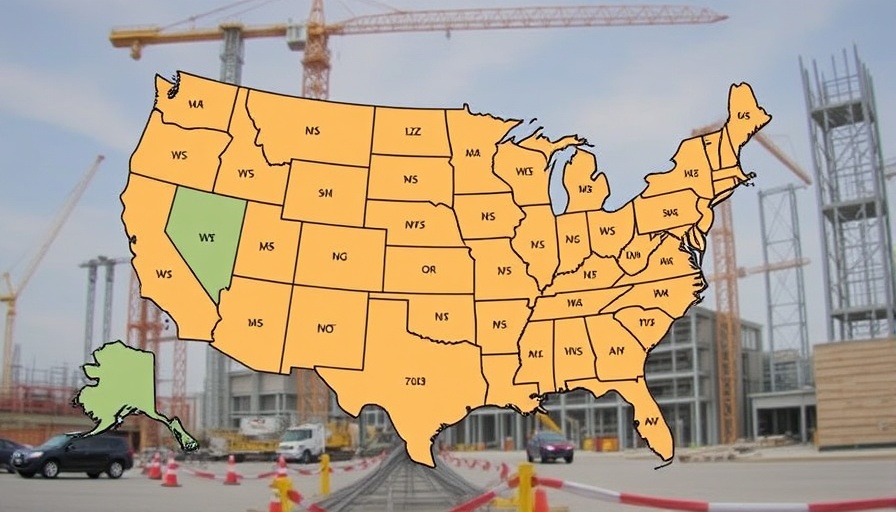
Construction Employment Growth: Understanding the Numbers
In a promising sign for the construction industry, 27 states have reported yearly gains in construction employment, reflecting a broader recovery effort in the labor market. According to the Bureau of Labor Statistics (BLS), there are now approximately 467,000 construction jobs available nationwide, exhibiting resilience against common economic fluctuations. This boost in jobs highlights a resurgence in construction activities and infrastructure initiatives across various regions.
The Driving Forces Behind Employment Increases
Several factors are contributing to the uptick in construction employment. Increased investment in infrastructure projects, spurred by federal funding initiatives, has played a crucial role in creating new job opportunities. As states harness billions of dollars for renovation and repair efforts, the demand for skilled labor has surged. Furthermore, returning consumer confidence, spurred by a recovering economy, has led to increased residential and commercial construction projects.
State-by-State Breakdown: Who's Leading the Charge?
While many states are experiencing job growth in construction, some have excelled beyond others. States such as Utah, Texas, and Colorado have shown the most significant gains, attributed to their expansive economic growth and robust real estate markets. Particularly, Utah's construction industry has thrived, achieving the highest rate of growth at more than 13%, indicating a strong demand for new housing and commercial spaces.
Challenges Facing the Construction Industry
Despite the positive outlook, the construction industry faces several challenges that could hinder progress. Labor shortages remain a pressing concern, as many workers departed the workforce during the pandemic without returning. Moreover, rising material costs and supply chain disruptions continue to impact project timelines and expenses, placing additional pressure on contractors and homeowners alike. Addressing these challenges is crucial for sustaining growth and ensuring that the booming demand for construction can be met efficiently.
Future Predictions: What Lies Ahead for Construction Employment?
Looking ahead, experts predict that the construction industry will continue to see growth, albeit at a possibly moderated pace. With the ongoing push for infrastructure improvements through government legislation, job opportunities in construction are likely to remain plentiful. Nonetheless, fluctuating material prices and potential economic downturns are factors that could influence job availability, making it essential for contractors to remain agile and adaptable.
Conclusion: Navigating the Positive Trends in the Construction Industry
The resurgence in construction employment across 27 states signifies a robust recovery in the sector, driven by infrastructure investment and rebounding consumer demand. However, challenges such as labor shortages and material costs could affect this growth. For homeowners and contractors alike, staying informed about industry trends and potential hurdles is key to navigating the construction landscape effectively.
As you consider home improvement projects or renovations, remember that understanding the current employment landscape can help you make more informed decisions. Whether you're a homeowner looking to upgrade your space or a contractor eager to capitalize on new opportunities, staying attuned to the industry's insight is vital.
 Add Row
Add Row  Add
Add 




Write A Comment